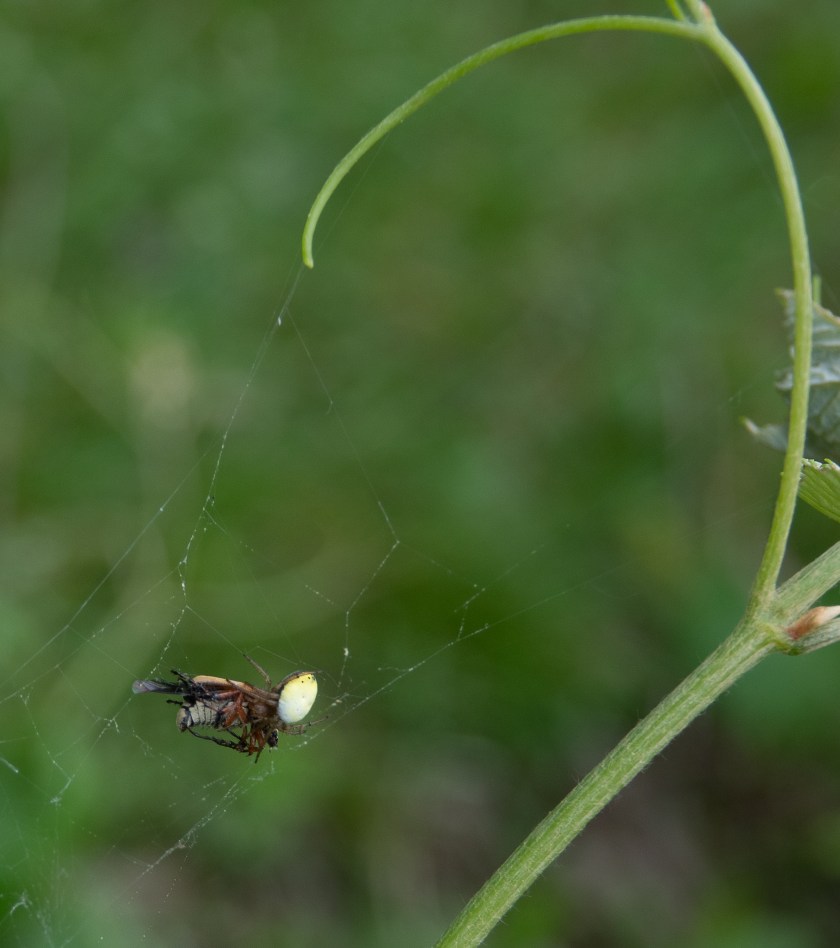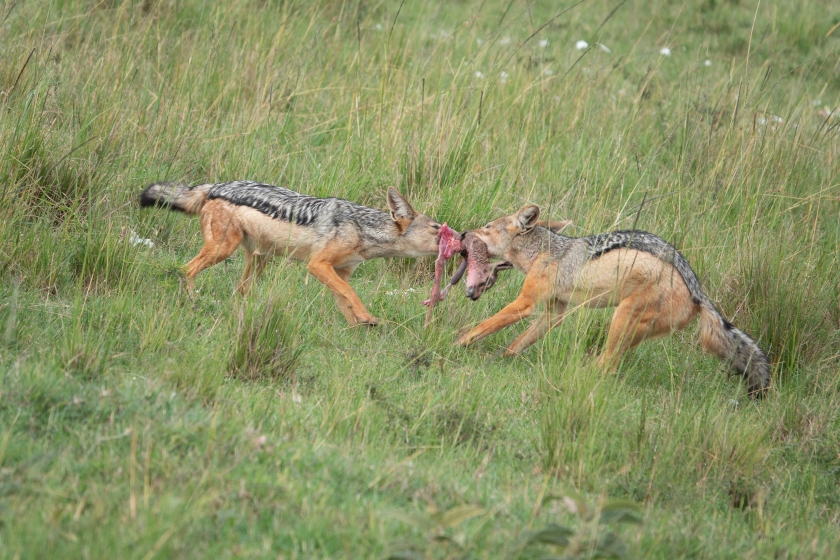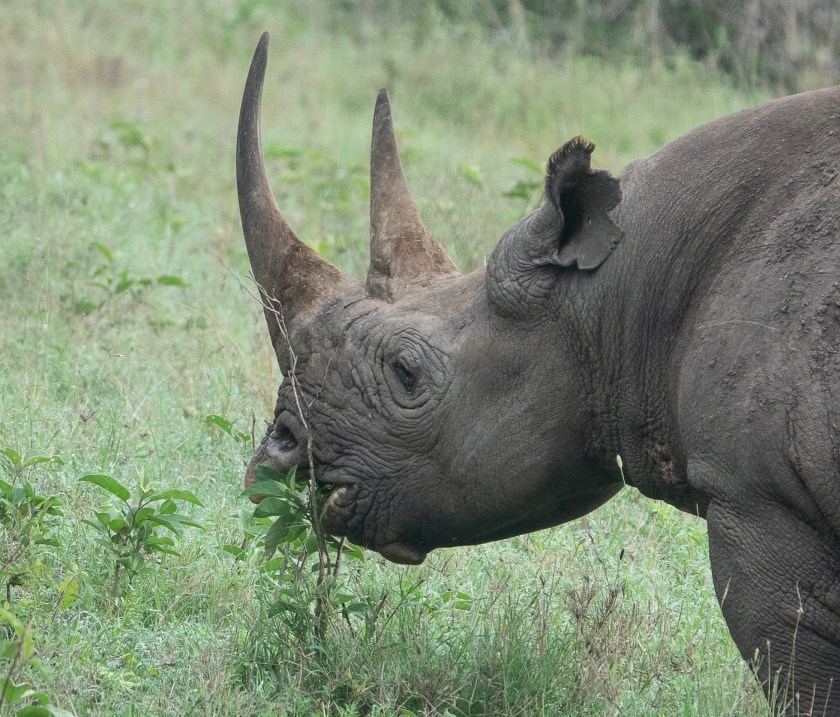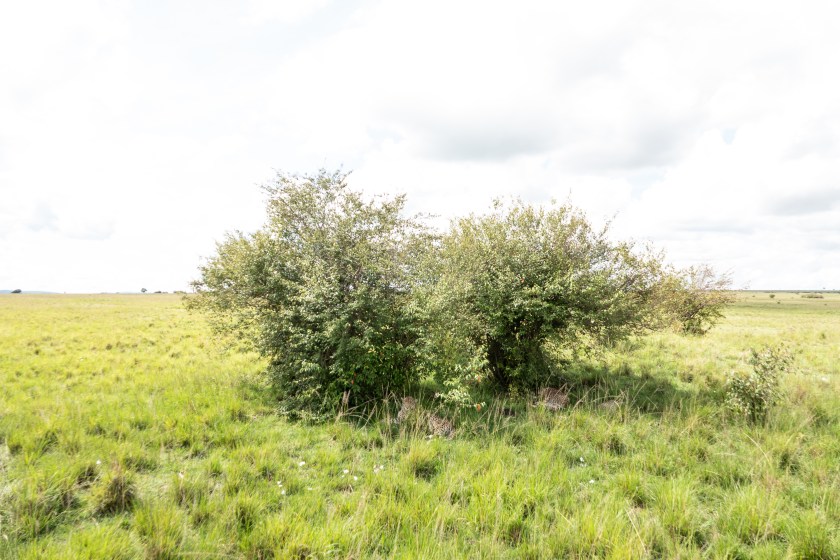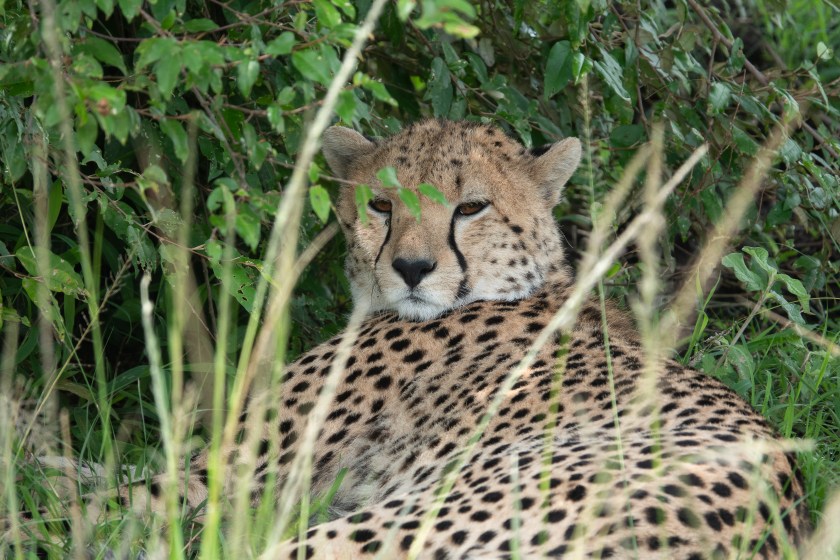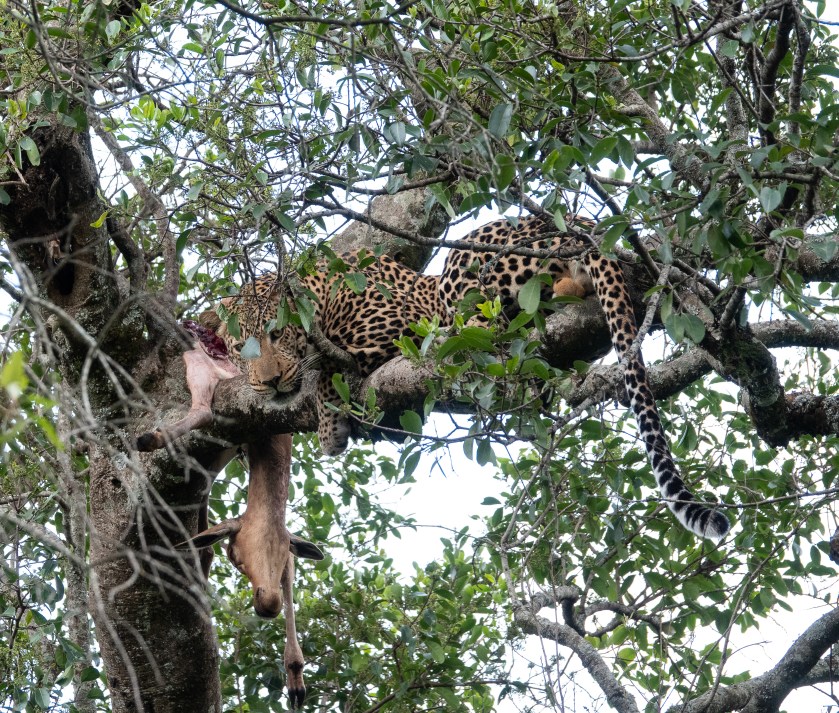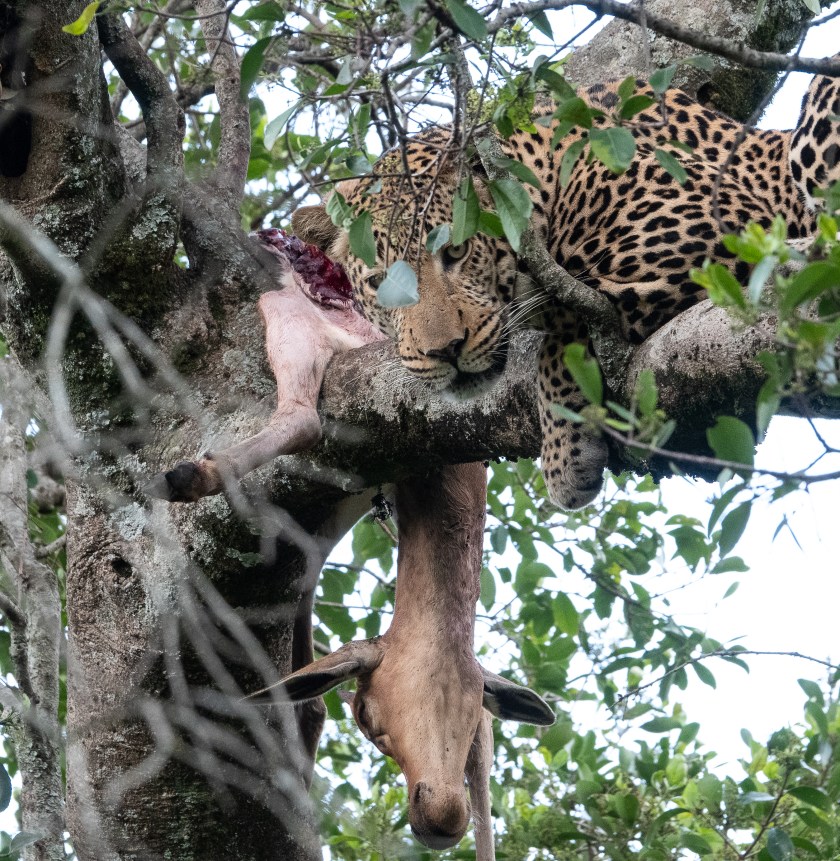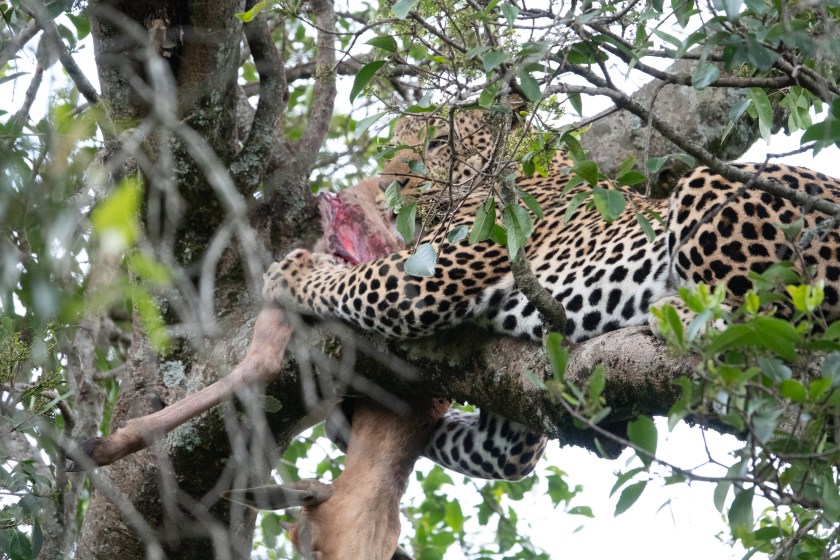Common Warthogs, Phacochoerus africanus, are not the most glamorous of animals. The warthog character in The Lion King movie is called Pumbaa, which means “foolish” in Swahili. But I have a soft spot for them, and if you read on you will discover that so do some mongoose.
Omnipresent in Africa, when startled they run around with their tails in the air like mini flagpoles. This one had just erupted from its underground burrow, just behind it in the shot.

When they feed, they often shuffle along on their knees:
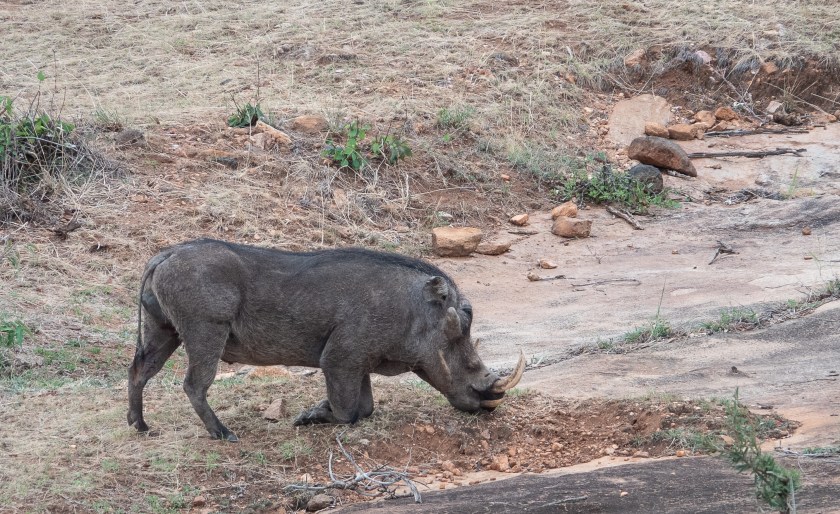
They love wallowing in mud to cool off and kill ticks. Look at the watermark on these two young males practicing their fighting skills.

This one has been wallowing, and is now having a good scratch, first one side, then its bottom, then the other side:
The males are mainly solitary, but when the female is in season, she may be followed around by several males. On this occasion her suitor failed to impress:
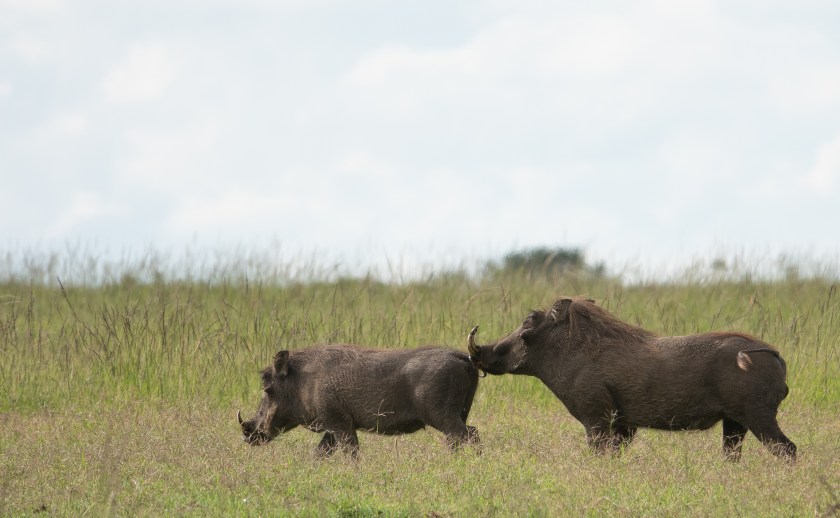
An adult male is formidable: he can weigh up to 330lbs (though 250lbs is more usual), and his tusks can be up to a foot long. The smaller lower tusks are razor sharp from constant rubbing against the upper tusks. They get their name from the giant growths on the faces of the males:

There are a total of four of these growths: two below the eyes, and two smaller ones further down. Although they look like warts, they are actually lumps of thickened skin.
In Uganda a number of years ago there was a resident warthog at one of the lodges that had bonded with a family of striped mongoose.

They look as though they are nursing:

but in fact I think that they were eating small insects from her skin, a mutually beneficial relationship, and judging by her blissed-out expression every bit as good as going to the spa.
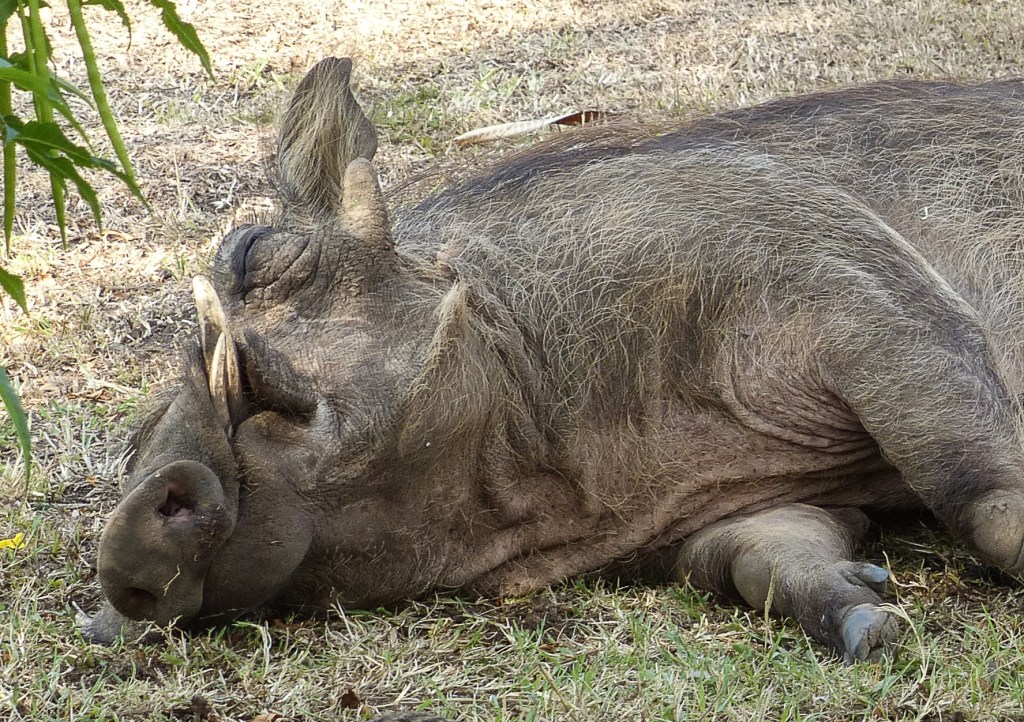
The Northern Kenyan warthogs on my most recent trip are a particular species, the desert warthog, Phacochoerus aethiopicus, found only here and in Sudan. The tips of the ears curl back , and the “warts” are hook shaped, as you can see on this big male:

PS In Africa safari guides talk of the Big Five (lion, elephant, rhino, buffalo, leopard) but there are also the Ugly Five: warthog, hyena, vulture, wildebeest, marabou stork. It seems a little mean!



